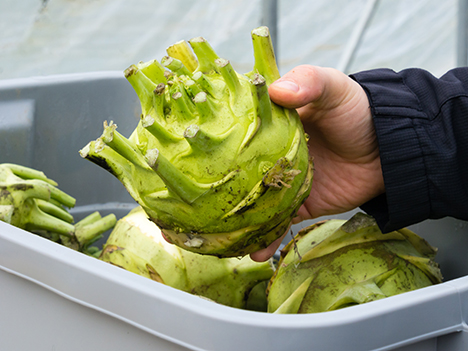Nope…no crime scene here. (You may be thinking of CSI – an entirely different topic)
By Candice Moore Groves, R.A., LEED AP BD+C, LEED AP O+M
 CSA stands for Community Supported Agriculture and it also stands for keeping your money in the local economy. At the beginning of the growing season, you are basically giving a local farmer “seed” money to get that season’s harvest started. And because you’ve invested in that farm and farmer, they commit to giving you a share of the products that they produce. You get some of the freshest produce available while allowing the farmer to earn a fair wage on their harvest – rather than paying a middle-man.
CSA stands for Community Supported Agriculture and it also stands for keeping your money in the local economy. At the beginning of the growing season, you are basically giving a local farmer “seed” money to get that season’s harvest started. And because you’ve invested in that farm and farmer, they commit to giving you a share of the products that they produce. You get some of the freshest produce available while allowing the farmer to earn a fair wage on their harvest – rather than paying a middle-man.
Usually you have the chance to interact with your farmer…get to know them, learn about their farming practices, and snag some of their favorite recipes. Many offer farm tours to their CSA members as well. You are eating seasonally – really getting in tune with the growing season and understanding the foods that are produced in your area (instead of shipping / importing fruits and vegetables from afar). Many farms that are involved in CSA programs are certified as organic – or at least practice sustainable farming practices. And – by participating in a program, you are ALWAYS reducing the environmental impact of transportation, as the produce is typically sourced within your same state.
“As a wife and mom – my FAVORITE thing about participating in a CSA is getting vegetables that I would not normally have purchased at my own, such as bok choy. I learn about different varieties of vegetables, try out a new recipe or two, and expose my family to different things.”
How does it work / how do you get started?
Locate farms in your area that offer CSA programs. There are many websites that can direct you to those in your region. Learn more here.
Based on the infrastructure in your area, some CSAs will deliver a box of produce to a designated location. Some ask that you pick up a bag of produce that is set aside at your local farmer’s market. Others invite CSA participants to pick up a share at the actual farm. Some programs provide a share each week, others provide a share every other week. Many allow you to decide if you want a “full” share – which provides food for larger families – or half-shares for smaller families. Many CSA programs offer additional items as add-ons such as eggs, cheeses, meats. You have the ability to customize a program to meet your needs choose the products that are right for you and your family.
 Note: there are risks associated with joining a CSA. If the farm or farmer does not have a good harvest, you may not receive the amount of produce that you anticipate.“Our family has participated in CSA programs from 5 different farms spanning over a decade. There was one year that the shares became smaller and smaller with each passing week. We were a little disappointed; however, the farmer was much more disappointed than we.” This is the farmer’s trade. They take pride in doing good work and being able to provide a bounty of produce to their supporters. Many will try to find ways to provide produce and other products to their supporters by bartering goods or services with other local farms in order to be able to deliver some products. The beauty about this relationship you have established – you can have that conversation with the farmer to gain a better understanding of the bad and the good.
Note: there are risks associated with joining a CSA. If the farm or farmer does not have a good harvest, you may not receive the amount of produce that you anticipate.“Our family has participated in CSA programs from 5 different farms spanning over a decade. There was one year that the shares became smaller and smaller with each passing week. We were a little disappointed; however, the farmer was much more disappointed than we.” This is the farmer’s trade. They take pride in doing good work and being able to provide a bounty of produce to their supporters. Many will try to find ways to provide produce and other products to their supporters by bartering goods or services with other local farms in order to be able to deliver some products. The beauty about this relationship you have established – you can have that conversation with the farmer to gain a better understanding of the bad and the good.
Go on – give it a try! You are investing in your health and your local economy.
© 2014 Sustainable Investment Group (SIG). All Rights Reserved.



